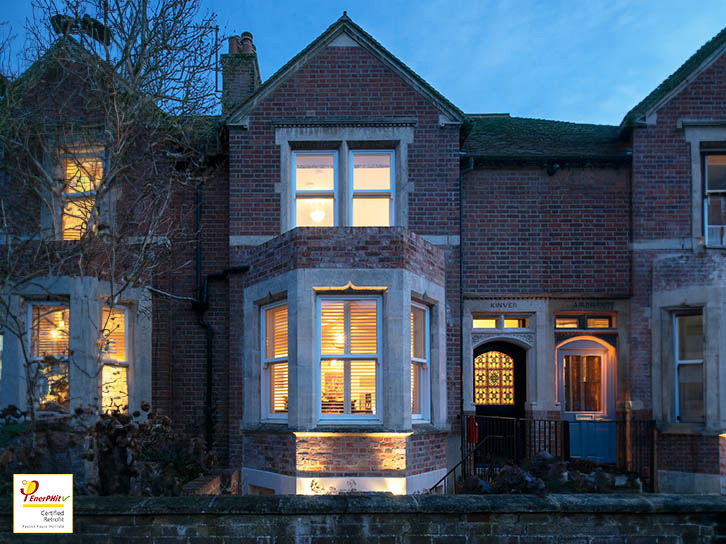What is EnerPHit?
Introduced in 2010 EnerPHit is the Passivhaus standard for existing buildings. It can be achieved either based on individual building components or heating demand. Both methods rely on Passivhaus principles to improve the efficiency and comfort of the building. Due to existing constraints, such as existing structure, fixed orientation and neighbouring buildings achieving full Passivhaus may be difficult. So, EnerPHit allows a little extra flexibility to building owners but still applies the same physics and rigor of Passivhaus.
EnerPHit & Passivhaus Principles
- Super Insulation
- Minimal Thermal Bridges
- Draft Free Detailing
- Efficient Mechanical ventilation with heat recovery
- Super-Efficient Windows
- Optimal glazing to wall ratio
- Efficient a shape as possible
Key Principles of EnerPHit Design
In common with Passivhaus, one of the main advantages of EnerPHit is COMFORT. High comfort levels and healthy buildings are achieved by reducing heating losses to a minimum. This is achieved through efficient design and meticulous attention to detail. For an overview of the Passivhaus standard refer to our guide on Passivhaus.
EnerPHit differs from Passivhaus through its acknowledgement of fixed constraints associated with existing buildings. The standard can be achieved in two ways:
- Energy demand method – this method sets a maximum space heating and cooling demand based on location. Generally in the UK this is 25kW/m2 a, compared to 15 at full PassivHaus.
- Component method – buildings utilising this method must comply with criteria relevant to each component including insulation (internal and external), windows and ventilation.
Independent of the method utilised, all buildings must have an airtightness of less than one air changes an hour at 50Pa. To achieve certification EnerPHit buildings must also demonstrate a predicted overheating percentage of less than 10%. However, generally less than 3% is recommended, 0% is ideal.
EnerPHit and Beyond
To address the needs of achieving zero carbon, coupled with advancing renewable technologies the Passivhaus Institute have taken EnerPHit further, offering EnerPHit plus and EnerPHit premium.
As with the Passivhaus standard in addition to meeting the requirements of EnerPHit classic, EnerPHit Plus projects produce almost as much renewable energy as occupants consume. The generated energy must come from renewable sources on the building, and the amount required is dependent on the footprint of the building and efficiency of the buildings equipment. While EnerPHit Premium goes even further by producing more renewable energy then required to heat and operate the building.
And of course there is nothing stopping you going for Passivhaus, Passivhaus Plus or Passivhaus Premium like the Hiley Road project did.
EuroPHit – Step by Step Retrofit
In addition to acknowledging that some buildings may not feasibly achieve full Passivhaus, the Passivhaus Institute have also acknowledged that not all projects can be completed in a single step. Life, family, money and enthusiasm can make a deep retrofit project seem unachievable. Quick fixes and shallow solutions can lock out more meaningful achievements or considerably increase the embodied carbon of a project. The idea of EuroPHit is to encourage the development of a whole house plan aiming for the EnerPHit standard but delivered in bite size chunks. EuroPHit offers a pre-certification route for long term retrofit projects to achieve EnerPHit certification no matter how long they take. Each stage is certified to show it works and is not at risk of moisture ingress or similar.
Independently Certified & Proven Effectivness
Before the introduction of the EnerPHit standard in 2010 retrofit projects were certified to Passivhaus and many retrofits continue to do so. There are now in excess of 5,700 independently certified Passivhaus recorded on the Passivhaus Institute. The continued independence of the certification process ensures that certified Passivhaus’, be they new build or retrofit demonstrate exceptional quality, delivering outstanding performance, and comfort. Recent research on the original Passivhaus demonstrates that even after 30 years the house continues to function to the Passivhaus standard.







